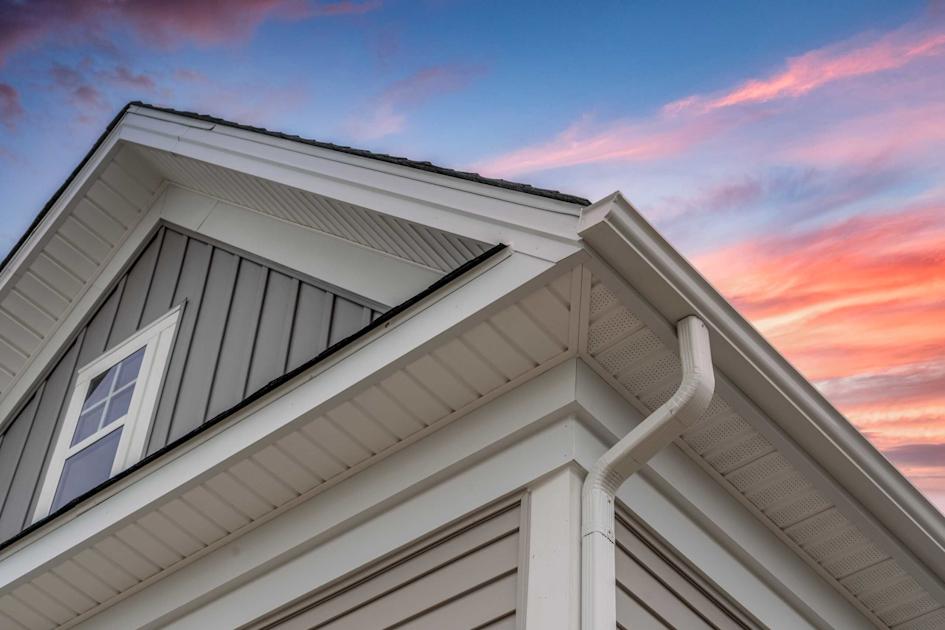Fascia, an often underestimated element of the human body, is vital for optimal health and well-being. An increasing amount of research reveals the importance of fascia in the body's physiology and pathology.
In this article, we will dive deep into the different fascia types, their roles, and their significance for overall health. Let's first understand what fascia is and why it is necessary.
What Is Fascia?
Fascia is a thin, tough, elastic type of connective tissue that extends throughout the body to support and protect your muscles and organs. Fascia has a widespread network similar to a spider web, wrapping around every internal part of the body from head to toe. Fascia types include superficial fascia, deep fascia, and visceral fascia.
Let's dissect these types one by one.
Superficial Fascia: The Body's First Line of Defense
Superficial fascia, also known as subcutaneous fascia, lies immediately below the skin. Its primary role is to connect the skin to underlying tissues and organs and provide a layer of insulation and protection.
Key Points about Superficial Fascia:
- This fascia type is rich in fat and water, offering thermal insulation and energy reserves.
- It helps in storing fat and water, and also assists in the diffusion of nutrients and waste.
Superficial fascia's flexibility and elasticity play a crucial role in the overall mobility of humans. It also supports your body's immunity by serving as the first line of defense against infections and injuries.
Deep Fascia: The Stabilizing Force
Deep fascia, also known as investing fascia, envelops muscles, bone, nerves, and blood vessels. It is comparatively denser and tougher than superficial fascia.
Key Points about Deep Fascia:
- Deep fascia helps provide structure and shape to the body.
- It aids in the efficient transmission of force during muscle contraction.
- The deep fascia contributes to stability and balance by providing a skeletal framework.
Its lubricated surfaces allow muscles to move seamlessly against each other, providing the freedom of motion we experience daily.
Visceral Fascia: The Internal Guard
The visceral fascia envelopes the internal organs; the heart, lungs, gastrointestinal tract, and urogenital system. It performs several critical roles, including maintaining the organs in their correct spatial relationships, providing nerve pathways, and facilitating fluid passage.
Key Points about Visceral Fascia:
- This type of fascia helps to keep organs in place within their cavities.
- It aids in the selective diffusion of fluids and metabolic waste.
In essence, visceral fascia helps maintain our internal body balance and ensures smooth operation of vital organ functions.
Importance of Healthy Fascia
Optimal fascia health supports the body's flexibility, strength, and overall mobility. Any fascial dysfunction, such as adhesions or tightness, can lead to pain, tension, and limited mobility.
Key factors critical for maintaining healthy fascia are:
- Regular physical activity
- Staying well-hydrated
- Eating a healthy, balanced diet
- Adequate rest and recovery
Frequently Asked Questions about Fascia Types
What is the role and location of superficial fascia?
Superficial fascia, also known as subcutaneous fascia, lies directly under the skin. Made of loose connective tissue, it serves as an insulation and cushioning layer. It stores water and fat, and carries nerves and blood vessels to the skin. This type of fascia also allows for the skin to slide smoothly over underlying tissues and muscles.
What is deep fascia and what is its function?
Deep fascia is a denser type of fascia that envelopes our muscles, bones, nerves, and blood vessels. As compared to superficial fascia, deep fascia is firmer and more flexible. It helps to reduce friction, allows free movement of muscles, and provides a supportive and protective layer to muscle groups and organs.
Can you tell me about visceral fascia?
Visceral or parietal fascia is the most internal layer of fascia. It wraps around our internal organs within the thoracic and abdominal cavities, such as the lungs, heart, liver, and kidneys. This type of fascia helps to hold the organs in place and provides a protective barrier against infections and disease.
Which type of fascia is most prone to issues or diseases?
All types of fascia can potentially develop issues and complications. However, problems often seem to occur more commonly with the deep and superficial fascia types due to sustained injuries, trauma, or regular wear and tear. Conditions like fascial adhesions, fasciitis, and fascial contracture are among the most common issues that can affect both the superficial and deep fascia types.
What is fasciitis and which type of fascia does it generally affect?
Fasciitis refers to inflammation of the fascia, often resulting from overuse injuries, trauma, or systemic diseases. It can affect any type of fascia. However, plantar fasciitis and necrotizing fasciitis usually involve the superficial and deep fascia, respectively.
Can fascia types be damaged due to lack of physical activity?
Yes, all fascia types can potentially be damaged due to lack of physical activity. Inactivity may lead to the stiffening and adhesions in the fascial tissues, particularly in the deep fascia surrounding the muscles. This can lead to impaired mobility, chronic pain, and a reduced quality of life.
How can I keep my fascia healthy?
Keeping your fascia healthy involves a combination of regular physical activity, balanced nutrition, and good hydration. Gentle stretching, foam rolling, yoga, or any form of movement that promotes flexibility and increases blood circulation can help to maintain the health of different fascia types.
Can fascia types be strengthened?
While fascia tissue itself can't be strengthened the same way muscles can, maintaining overall body health and muscle strength can indirectly keep the fascia healthy and resilient. Remember, a healthy fascia contributes to improved postural alignment, increased muscular strength and flexibility, better physical performance, and reduced risk of injuries.
Pros of Different Fascia Types
Different types of fascia have their own unique pros. When looking into your fascia options, these advantages can help you understand what works best for your specific needs.
PVC Fascia
Durability
PVC, or polyvinyl chloride, has an excellent reputation for being highly durable. It's one of the most long-lasting materials, able to withstand extreme weather conditions, be it heavy rainfall, snowstorms, or scorching heat.
Low Maintenance
Another significant advantage to PVC fascia is its low maintenance requirements. It won't rust, peel, or crack, eliminating the need for regular touch-ups. With PVC fascia, you can say goodbye to countless hours spent maintaining your home’s exterior.
Aluminum Fascia
Flexibility
Aluminum fascia tends to be extremely flexible, making it particularly useful for buildings with complex and unique architecture. Its flexibility allows it to fit perfectly around different angles, curves and edges.
Lightweight
Being one of the lighter fascia materials, aluminum is easy to handle and install. This can save considerable time and effort during the installation process and make the overall project much smoother.
Wood Fascia
Natural Aesthetics
For those looking for a more traditional or natural aesthetic, wood fascia is the perfect choice. It has a beautiful, warm appearance that can be a key design element for many homes.
Versatility
Wood fascia is highly versatile in terms of paint options. You can choose to leave it with its natural finish, stain it, or paint it in the color of your choice. This gives you the freedom to tailor its look to fit your home's exterior design.
Cons of Different Fascia Types
Every type of fascia comes with its own cons. Understanding these downsides can help you make a more informed decision about what type of fascia best suits your needs.
PVC Fascia
Less Aesthetic Appeal
While PVC fascia comes with many advantages, many homeowners find that it lacks the aesthetic appeal of other materials. The plastic look can stand out substantially from the other natural elements on your home’s exterior.
Potential for Warping or Buckling
In extreme heat or under heavy weight, PVC fascia has a chance of warping or buckling. Depending on your local climate and the installation method used, this could be a significant concern.
Aluminum Fascia
Susceptible to Denting
While aluminum fascia is durable in many ways, it's relatively susceptible to denting during storms or due to physical impact. This can hinder the aesthetics of your home’s exterior over time.
Limited Finishing Options
Unlike wood fascia, aluminum fascia doesn't offer as many finishing options. Typically, you're limited to the color selection provided by the manufacturer, making it less versatile if you're looking for a specific look.
Wood Fascia
High Maintenance
The major downside to wood fascia is that it requires regular maintenance. Wood is prone to rot, insect damage, and warping, meaning it needs to be regularly inspected and treated to ensure it stays in good shape.
Cost
Wood fascia tends to be one of the pricier options. While the initial cost may be fine for some budget ranges, the added maintenance costs over time can add up, making it a less affordable option in the long run.
Myths and Misconceptions about Fascia Types
Fascia is an underrated and often misunderstood part of our bodies. Fasciae are connective tissues that encase and support muscles, organs, and other structures within the body. It’s an intricate network that plays an important role in body mechanics, mobility, and stability. Despite its significant role, several myths and misconceptions have emerged about fascia types over the years. Let’s dispel some of these misconceptions and shed light on the facts.
Myth 1: All Fascia is the Same
Misconception: Fascia is just one homogeneous tissue that’s the same all over the body.
In reality, the type and function of fascia can vary greatly. Fascia is classified into three primary types based on its function and location:
Deep fascia: This thick, dense fascia wraps and separates our muscles. It provides a sliding and gliding environment for muscles, allowing them to function effectively.
Superficial fascia: Located just under the skin, this type of fascia plays a significant role in fluid and thermoregulation, and it also assists with movement dynamics.
Visceral fascia: Visceral fascia ensheathes internal organs and structures, providing structural support and assisting with movement and function of these organs.
Each fascia type has different functions and characteristics and can respond differently to treatments and interventions.
Myth 2: Fascia Can Be Stretch Out
Misconception: Regular stretching can lengthen and reshape fascia.
The fascia in our bodies is robust and resilient. It is composed of elastin, collagen, and a fluid-filled ground substance. While it has a degree of pliability, it's misleading to suggest that it can be lengthened or reshaped simply by stretching. Fascia is designed to resist over-stretching to protect the body against injury. More recent scientific thinking leans towards the idea of fascial glide – promoting the gliding or sliding of fascia to support mobility, rather than trying to stretch it out.
Myth 3: All Body Pains are Fascia-Related
Misconception: Every pain in the body is a fascia problem and can be resolved by fascial treatment.
While it's true that fascial restrictions and adhesions can contribute to pain and mobility issues, not all body pain is fascia-related. Pain can originate from numerous other sources, including muscular imbalances, joint problems, nerve impingements, systemic diseases, and more. It's essential to get assessed by a knowledgeable health professional to determine the actual cause of the pain.
Myth 4: Fascia is Only an Anatomy Term
Misconception: Fascia is just an anatomical structure with no real clinical or functional significance.
While fascia may have been viewed this way in the past, current research is revealing that it plays a fundamental role in force transmission, proprioception (body awareness), and overall body function. It's not just an anatomical structure, but a dynamic system that interacts with and influences other physiological systems.
Myth 5: One Fascia Massage Releases Fascial Adhesions
Misconception: A single session of fascia-related therapy or a massage can release fascial adhesions immediately.
Changes to the fascia occur gradually over time. A single session may provide temporary relief, but long-lasting changes require consistent, targeted interventions over time. Furthermore, given that the fascia connects the whole body, treating one specific area may not address the root cause of an issue. Comprehensive assessment and treatment are necessary for creating meaningful improvements in fascial health.
Myth 6: Hydration Doesn’t Affect Fascia
Misconception: Hydration levels have no effect on the health and function of fascia.
Fascia is composed of a large amount of water. Proper hydration is crucial to maintaining the health and function of these tissues. Dehydrated fascia can become stiff and less pliable, contributing to restrictions, reduced mobility, and pain. Therefore, staying well-hydrated is a crucial part of maintaining good fascial health.
By debunking these myths and misconceptions about fascia and it's types, we can gain a more accurate understanding of this complex tissue system. This greater understanding will ultimately allow us to better care for our bodies and address health-related issues effectively.
Summary
Fascia types, indeed, have a lot more to offer than what meets the eye. Their diverse range shows how they not only form a vital link in our body's anatomy but also play a central role in supporting and connecting bodily structures. It's really a fascinating system that contributes massively to our overall body function, strength, and flexibility.
Understanding fascia types can really change the way we perceive our bodies. They envelop our organs, muscles, nerves, and blood vessels, integrating the entire body into a connected whole. It's hard to notice their hard work, but their role in body movement, posture alignment, and injury prevention is truly remarkable.
So next time you're stretching or workout, pay a little gratitude to these fascia types. They're the silent heroes that keep your body strong, flexible, and nicely connected. Knowing about them can make you more mindful about your movement practices and help you avoid injuries. After all, a better understanding of your body can take your health and fitness to the next level.
About Bay Area Siding Company
Bay Area Siding Company is a vibrant cornerstone of Bay Area, CA, known for our top-notch professionalism and exceptional craftsmanship in all things siding. We are craftsmen who have diligently served our community for years, designing and installing durable, affordable, and aesthetically pleasing siding options for businesses and homeowners. We take great pride in enhancing the local landscape and boosting property values with our work. Here at Bay Area Siding Company, we believe that quality siding is not simply about functionality but also about transforming a structure into a work of art. We're all about customer satisfaction and respect for your property, and we look forward to serving your siding needs, whether they're about repair, replacement, or a brand-new installation.
















